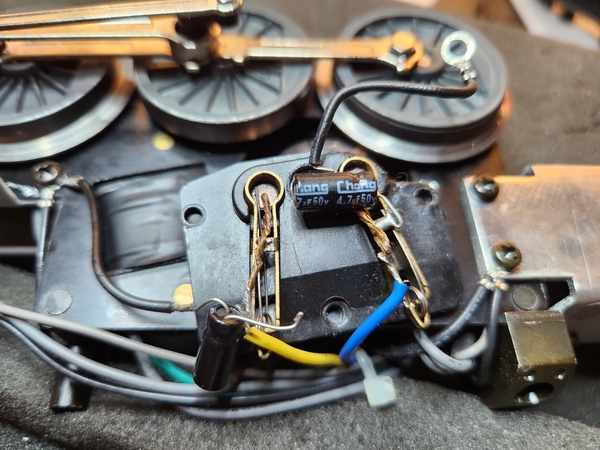I love the look of traditional postwar steam locos. Unfortunately they are geared tall, run way too fast, and as Pat points out their speed tends to change as they get warm (although in my experience they usually speed up instead of slowing down.)
Nevertheless, I bought one of these Conventional Classics Hudsons when they first came out. My layout then was an O72 oval laid directly on the floor of my apartment loft. Shoddy building construction and 40 years of settling meant that one side of the room was at least 1" higher(!) than the other--not a bad thing for testing. Every postwar and MPC loco I tried had something of a "roller coaster" feel to it. The amps would rise as it strained uphill toward my balcony door, then it would build speed as it raced down the other side toward the stairs. Except the new CC 2056 didn't act like this. Instead, it acted something like a speed-controlled loco in conventional mode!
Although it LOOKS like a postwar 2056, I wager that NONE of the mechanical parts will interchange. Both motors use spur gears with two-stage reduction. Perhaps due to the use of metric gears, the CC ratio is lower--about 13:1 instead of 11:1 on the postwar. I don't believe this alone explains the difference in running characteristics. Instead of the venerable and often balky mechanical e-unit, this CC Hudson has an electronic one. I'm convinced the circuit has features to prevent a universal motor from overspeeding under light load. In some ways the added control is a good thing, but the downside is that I found the motor "tight" and grabby at slow speeds, and subjectively not as gratifying to run as a postwar original. Perhaps mine just needed more break-in time. However other Forum posts suggest that the bearings/shaft alignment in some of these Conventional Classics was poor, and contributed to rough running. I also believe these motors were designed for brushes with a very high resistance. Different windings could also be responsible for the different operating characteristics. It would be great if Bob Hannon or someone more knowledgeable than me would make some measurements and provide a cursory analysis of the circuit.
I thought about moving the electronic reverse from the CC 31778 to a vintage loco, and conversely, seeing if the Hudson's motor would "loosen up" with a conventional E-unit--or no E-unit at all. Then Legacy came out, I moved on to other things, and pretty much forgot about all of this until today.
So @Jeff T , to troubleshoot your problem (and for the sake of science) I respectfully suggest that you disconnect the electronic E-unit, smoke unit, etc., and wire the motor directly to the rails. Connect the wire from the pickup rollers to one brush; the motor should run in one direction. Try for at least 30 minutes, see if it still slows down. Also, monitor the current draw (amperage.) If the loco keeps going or even speeds up a little, then the problem is in your E-unit and not the motor. Please try it and let us know what you find.










